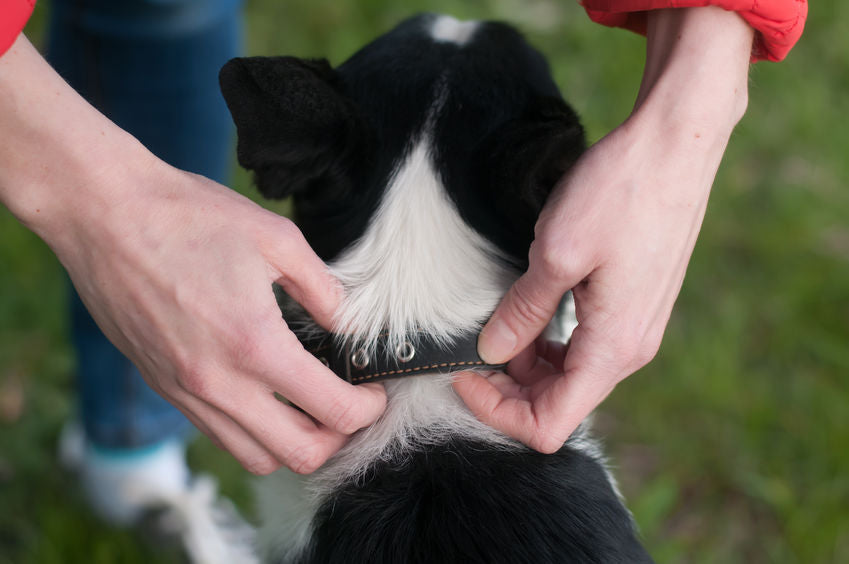
What size collar is right for your doggie? Collar Size Chart for Dogs
Share
Collar check! Snapping on a new collar for your fur-iend is easy, but there are a few tricks to keep that pup comfy and secure. Let's talk snug fits!
Fitting a collar isn't just a one-and-done deal! Even though it's simple, your dog's weight can change over time, so keep an eye on that collar fit on a regular basis. Remember, a comfy pup is a happy pup!
How to measure:
No more collar confusion! To find the perfect fit, measure your pup's neck with a tape measure (snug, but not tight, with three fingers room). Then, add an inch for comfort when choosing a collar size.
Let's play the "three-finger test"! Slide those digits under your pup's collar. No room? Time to adjust! Weight changes happen, so regular fit checks keep tails wagging happily and safely.
Please note that lower quality collars often list the total length of the collar as their ‘size’ and this can lead to buying a collar that is too small.
Surprise collar for your furry friend? Or is measuring a tail-chasing tornado mission impossible? No sweat! Our handy chart below lists average neck sizes and weights for popular breeds. It's the perfect cheat sheet for pup-tacular gifts or when your wiggle meter is off the charts.
Checking the fit and comfort:
You should be able to fit 3 fingers comfortably between your dog’s collar and their neck.

Only room for 2 fingers? Time to loosen for happy walks. Can slide your whole hand under? Tighten it up to avoid accidental escapes!
Popular breeds and their average neck size and weight:
| Breed | Average Neck Size | Average Weight | Top 50 Breeds |
| Labrador Retriever | 18-24″ | 55-80 LBS | 1 |
| German Shepherd | 18-24″ | 50-90 LBS | 2 |
| Golden Retriever | 16-24″ | 55-75 LBS | 3 |
| Bulldog (French) | 12-16″ | 18-28 LBS | 4 |
| Bulldog (English) | 18-24″ | 49-55 LBS | 5 |
| Beagle | 12-18″ | 18-30 LBS | 6 |
| Poodle (Standard) | 12-18″ | 45-70 LBS | 7 |
| Rottweiler | 24-30″ | 77-130 LBS | 8 |
| Yorkshire Terrier | 6-12″ | 4-7 LBS | 9 |
| German Shorthair Pointer | 15-17″ | 40-65 LBS | 10 |
| Boxer | 16-22″ | 55-75 LBS | 11 |
| Siberian Husky | 16-22″ | 40-55 LBS | 12 |
| Dachshund Standard | 16-20″ | 16-32 LBS | 13 |
| Great Dane | 20-26″ | 99-200 LBS | 14 |
| Pembroke Welsh Corgi | 14-16″ | 25-38 LBS | 15 |
| Doberman Pinscher | 18-24″ | 66-88 LBS | 16 |
| Australian Shepherd | 16-22″ | 35-75 LBS | 17 |
| Schnauzer Miniature | 10-16″ | 13-15 LBS | 18 |
| Cavalier King Charles Spaniel | 10-16″ | 13-18 LBS | 19 |
| Shih Tzu | 10-14″ | 12-16 LBS | 20 |
| Boston Terrier | 12-18″ | 10-25 LBS | 21 |
| Pomeranian | 10-14″ | 9-13 LBS | 22 |
| Havanese | 8-14″ | 7-13 LBS | 23 |
| Shetland Sheep Dog “Sheltie” | 11-18″ | 11-24 LBS | 24 |
| Bernese Mountain Dog | 20-26″ | 75-100 LBS | 25 |
| Britany | 14-16″ | 30-40 LBS | 26 |
| Springer Spaniel | 14-18″ | 49-55 LBS | 27 |
| Bullmastiff | 26-28″ | 99-130 LBS | 28 |
| Cocker Spaniel | 12-18″ | 26-35 LBS | 29 |
| Vizsla | 15-22″ | 49-62 LBS | 30 |
| Pug | 12-16″ | 14-18 LBS | 31 |
| Chihuahua | 8-14″ | 2-6 LBS | 32 |
| Maltese | 10-14″ | 6-9 LBS | 33 |
| Weimaraner | 16-22″ | 55-85 LBS | 34 |
| Newfoundland | 26-32″ | 110-152 LBS | 36 |
| Cane Corso | 22-30″ | 88-110 LBS | 37 |
| Border Collie | 14-18″ | 27-45 LBS | 38 |
| Basset Hound | 16-22″ | 40-60 LBS | 39 |
| Collie | 18-22″ | 50-75 LBS | 40 |
| Rhodesian Ridgeback | 20-23″ | 64-90 LBS | 41 |
| West Highland Terrier | 14-16″ | 15-22 LBS | 42 |
| Belgian Malinois | 16-20″ | 55-75 LBS | 44 |
| Shiba Inu | 14-17″ | 17-23 LBS | 45 |
| Bichon Frise | 14-18″ | 10-14 LBS | 46 |
| Akita | 20-24″ | 70-130 LBS | 47 |
| St. Bernard | 26-32″ | 140-260 LBS | 48 |
| Wheaten Terrier | 18-22″ | 32-37 LBS | 49 |
| Bloodhound | 22-28″ | 88-105 LBS | 50 |
Related Posts
-
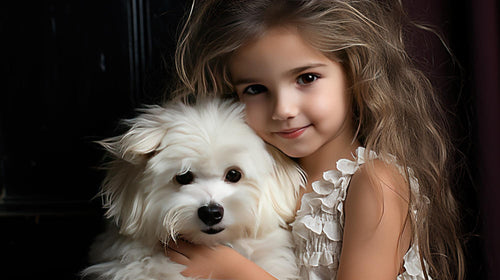
Building Bonds: Teaching Children How To Interact Safely With Dogs
In this guide, we explore the journey of teaching our children good dog ownership and interaction. Emphasizing safety and respect, we highlight the importance of understanding dog body language and debunk common myths to prevent unsafe scenarios. By instilling principles of consent and kindness, we aim to foster compassionate relationships with animals.
From petting techniques to engaging with service animals, the lessons here equip parents to supervise and guide their children's encounters with dogs. We prioritize creating an environment where every interaction, or 'paw-shake,' is positive. Whether considering boarding or a stay at a pet resort, the safety and welfare of both child and dog remain paramount.
-

9 Life Lessons from My Four-Legged Friend
Forget classrooms, wag more tails! Our furry friends are our wisest teachers.
Ever heard that the best teachers have four legs and wagging tails? I couldn't agree more! Our canine companions have a special way of imparting wisdom that surpasses even the most learned humans. From their unwavering love to the joy of the present moment, dogs are like seasoned professors in the school of life.
-
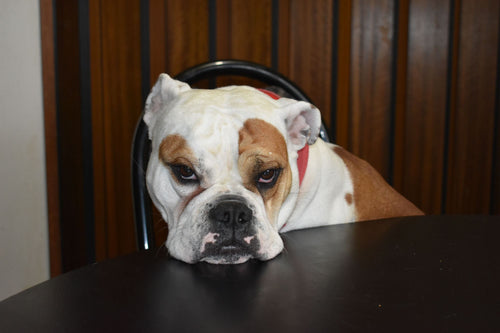
How To Speak Dog: Decoding Your Dog's Body Language For a Stronger Bond
This guide will help you understand your dog's body language and build a stronger bond with them. Dogs use nonverbal cues to express their emotions, desires, and needs. By learning to interpret these cues, you can become a fluent speaker of 'dog' and improve your relationship with your pet.
-
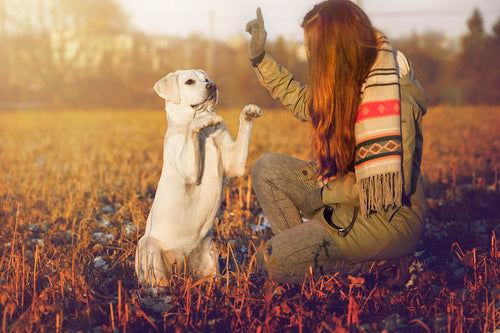
How to Train a Puppy Using Positive Reinforcement
If you're thinking about inviting a new pup into your life, you're probably wondering how you should train your dog so he's well behaved and will listen to your commands. Positive reinforcement is all about encouragement and praise, so the training process is a pleasant one. Most dogs respond extremely well to this method of training and learn quickly.
-
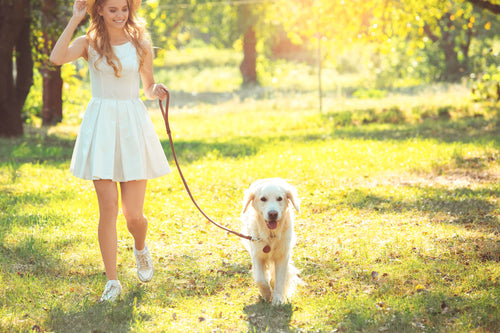
How to leash train a puppy.









